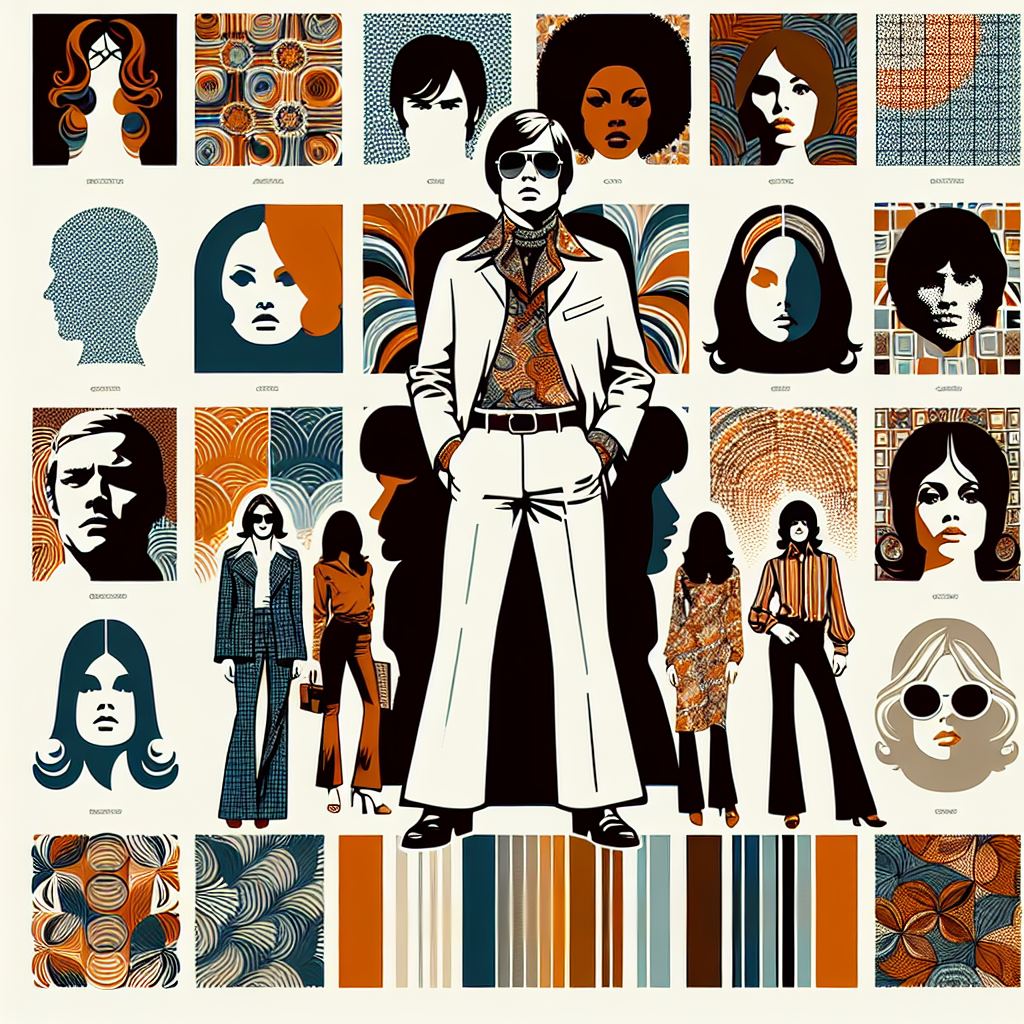Unveiling the Timeless Style: Fashion Statements in ‘All the President’s Men (1976)’
In 1976, the film "All the President’s Men," directed by Alan J. Pakula, graced movie screens, chronicling the journalists Bob Woodward and Carl Bernstein’s investigations that led to the Watergate scandal revelations. While the film is celebrated predominantly for its political narrative, it is also a significant marker of fashion trends reflective of its era, capturing a moment in time when clothing intersected with the cultural and socio-political zeitgeist.
Significance in Fashion History
As the film follows the meticulous, often grueling work of Woodward and Bernstein, played by Robert Redford and Dustin Hoffman, it showcases the 1970s American fashion—a period characterized by a blend of formal and casual styles that mirror this decade’s tumultuous transitions. This era marked a departure from the flamboyant and psychedelic styles of the late 1960s, emphasizing a more subdued, yet refined aesthetic. The decision to dress the characters in such deliberate wardrobe choices underscores not just personal style but an immersive authenticity, allowing viewers to feel the environment and ethos of the Washington Post newsroom.
Main Themes and Cultural Influences
The movie’s fashion is indicative of understated elegance, grounded in practicality and the professional environments of journalism and politics. Neutral color palettes—predominantly tones of brown, beige, and navy—set the tone, reflecting the seriousness and gravitas of their investigative work. The wardrobe, predominantly featuring trench coats, well-fitted jeans, and button-down shirts, aligns with mid-70s fashion trends and serves as a symbol of the broader cultural ethos—a society striving for transparency and truth amidst a political whirlwind.
The influence of designers like Ralph Lauren and Calvin Klein is palpable, as they ushered in a minimalist, chic style that became synonymous with the ‘American Look.’ This aesthetic reflected a cultural shift towards simplicity after a period dominated by excess. Ralph Lauren’s rise during this decade revolutionized American fashion with his timeless designs, foregrounding classic cuts that resonated with the democratic spirit of journalism portrayed in the film.
Detailed Examples of Specific Designs and Moments
-
Robert Redford’s Trench Coats and Button-Down Shirts:
- Redford’s portrayal of Bob Woodward is marked by the trench coat—a staple of the investigative journalist’s look. This timeless piece, popularized by its practical use in variable weather, also conveys a sense of sophistication and urbanity, ideal for the professional represented in the movie. Complementing the trench coat, his button-down shirts and ties blend perfectly with the slightly rebellious undertone of the journalist carving paths to truth, a look that felt both accessible and aspirational.
-
Dustin Hoffman’s Rolled-Up Sleeves:
- Portraying Carl Bernstein, Dustin Hoffman’s character frequently dons the classic jeans-and-shirt combo, often rolling up his sleeves—a symbolic gesture reflecting the relentless pursuit of his leads. This style underscores both a practical approach to work and a certain cool nonchalance that became iconic in depicting the hardworking yet stylish journalist.
- Women’s Fashion in the Newsroom:
- While the film centers around male protagonists, the female characters’ fashion subtly underscores women’s roles in journalism during the ’70s—a time when women were increasingly breaking into male-dominated fields. The women’s fashion, characterized by blouses, knee-length skirts, and fitted blazers, communicates professionalism and a growing assertion of their place in the newsroom and broader society.
Fashion Reflecting Cultural, Social, and Historical Contexts
The fashion in "All the President’s Men" is not merely a reflection of personal style but a commentary on broader social narratives. The utilitarian approach, influenced by the understated elegance of the period, mirrored America’s grappling with political truths and a longing for authenticity. As the country navigated through the counterculture movement’s decline and shifted towards a new chapter, the minimalist fashion embraced in the film echoed these transitions.
Moreover, the film’s wardrobe decisions provide insights into the gender roles and professional dynamics of the time. As women entered the professional workforce in increased numbers, their fashion mirrored both conformity to existing norms and subtle rebellion against them—seeking to carve out identities that were both professional and personal.
Legacy and Lasting Influence
The film’s fashion legacy continues to resonate within the contemporary fashion industry, showcasing the enduring nature of classic styles within a modern context. The emphasis on tailored fits, functional outerwear, and subdued tones remains prevalent in today’s fashion landscape, illustrating the timeless appeal of the ‘70s understated style. Designers continue to draw inspiration from this era, reimagining classic silhouettes with modern twists, ensuring their relevance across decades.
Furthermore, the film has influenced the way fashion is perceived in journalistic narratives, setting a standard for the representation of journalists-as-heroes through thoughtful sartorial choices. This has permeated into popular culture, shaping viewers’ perceptions of what investigative journalism—and those who practice it—should look like.
Reflective Questions and Takeaways
As we look back at "All the President’s Men" and its impact on the fashion zeitgeist, several reflective questions emerge:
- How does the fashion of the 1970s, as depicted in the film, continue to influence modern wardrobe staples?
- In what ways can fashion be used as a tool to enrich storytelling within other professional narratives?
- How can future designers and filmmakers build on this legacy to craft wardrobes that are both rooted in context and transcend time?
Ultimately, "All the President’s Men" not only remains a staple in the annals of cinematic history but also serves as a treasured reference point within the fashion industry, offering timeless style inspirations for generations to come. Its relevance today invites us to consider the delicate interplay between fashion, culture, and identity, leading us to appreciate the powerful narratives that our clothing continues to tell.
Got more questions? Our personalized Fashion Explorer AI assistant is here to help. Click here to start a conversation!
[Advertisement]
Wondering how fashion reflects deeper values? Discover how ANY trend or style relates to positive biblical principles with Fashion and Scripture GPT from BGodInspired.com. Click here to see fashion in a new light!
[Advertisement]

